Bobtail cats, with their distinctive shortened tails, often spark curiosity and admiration. These unique felines, sometimes mistaken for wild bobcats at first glance, encompass a diverse range of breeds, each with its own fascinating history and personality. This guide delves into the world of bobtail cats, exploring their origins, characteristics, and the breeds that proudly sport these charming, abbreviated tails.
Understanding the Bobtail Trait
The bobtail in cats is a naturally occurring genetic mutation that results in a shorter tail than that of typical felines. This mutation has arisen independently in various cat populations around the globe, leading to the development of distinct bobtail breeds in locations ranging from North America to Asia.
While the bobtail trait is primarily a cosmetic feature, it’s essential to understand its potential health implications. Most bobtail cats live full and healthy lives without any tail-related issues. However, some may be predisposed to arthritis in the tailbone. In more severe cases, the genes responsible for a bobbed tail can sometimes be linked to health problems affecting the digestive and urinary systems. These issues can manifest as constipation, urinary tract infections, or bowel control difficulties. Responsible bobtail cat ownership includes regular health monitoring and, when necessary, veterinary care to address any potential health concerns.
It’s worth noting that while a cat’s tail plays a role in balance, the righting reflex, and sensory input, bobtail cats adapt remarkably well to their shorter tails. Despite potential health considerations, many bobtail breeds boast robust lifespans. For example, the American Bobtail commonly lives between 11 and 15 years, and the Japanese Bobtail can enjoy a lifespan of 15 to 20 years with proper care and nutrition.
Bobtail Cat Personalities and Activity Levels
Bobtail cats are widely celebrated for their engaging and adaptable personalities. Often described as friendly and sociable, they make wonderful companions for individuals and families alike.
The American Bobtail, for example, has earned the affectionate nickname “Golden Retriever of the cat world” due to its laid-back and adaptable nature. These cats are known to be exceptionally friendly, forming strong bonds with their families, including children and other pets. Their playful yet gentle temperament makes them ideal family cats.
In contrast, the Japanese Bobtail is often described as a social butterfly. These energetic and curious cats thrive on interaction and are known to follow their human companions around the house, often vocalizing with soft chirps to get attention. Japanese Bobtails are intelligent and playful, maintaining their kitten-like enthusiasm well into adulthood. They are also notably vocal, communicating with their families through a variety of chirps and meows. This breed is particularly known for its love of games and puzzles, showcasing a surprising aptitude for learning tricks.
While individual personalities vary across breeds, a common thread among bobtail cats is their loyalty and affection towards their human families. Whether it’s cuddling on a lap or simply being nearby, their devotion is a defining characteristic.
Activity requirements among bobtail cats, like all cats, can vary. Different bobtail breeds exhibit different energy levels and play preferences.
American Bobtails enjoy playtime and may even enjoy leash walking, but they are not excessively active cats. They appreciate interactive play sessions that engage their minds and bodies, such as fetch, hide-and-seek, and puzzle toys. While they enjoy activity, they also appreciate downtime and are content to relax after moderate exercise.
Japanese Bobtails, on the other hand, are generally more active and require more stimulation. Known for their high energy levels and inquisitive nature, they love to explore, climb, and play. Providing a stimulating environment with cat trees, toys, and scratching posts is essential for their well-being. Regular play sessions are crucial to keep these intelligent and energetic cats happy and healthy.
Exploring 7 Popular Bobtail Cat Breeds
The world of bobtail cats is rich and diverse, with several recognized breeds showcasing this unique trait. Here are seven bobtail cat breeds that are particularly popular and noteworthy:
1. American Bobtail
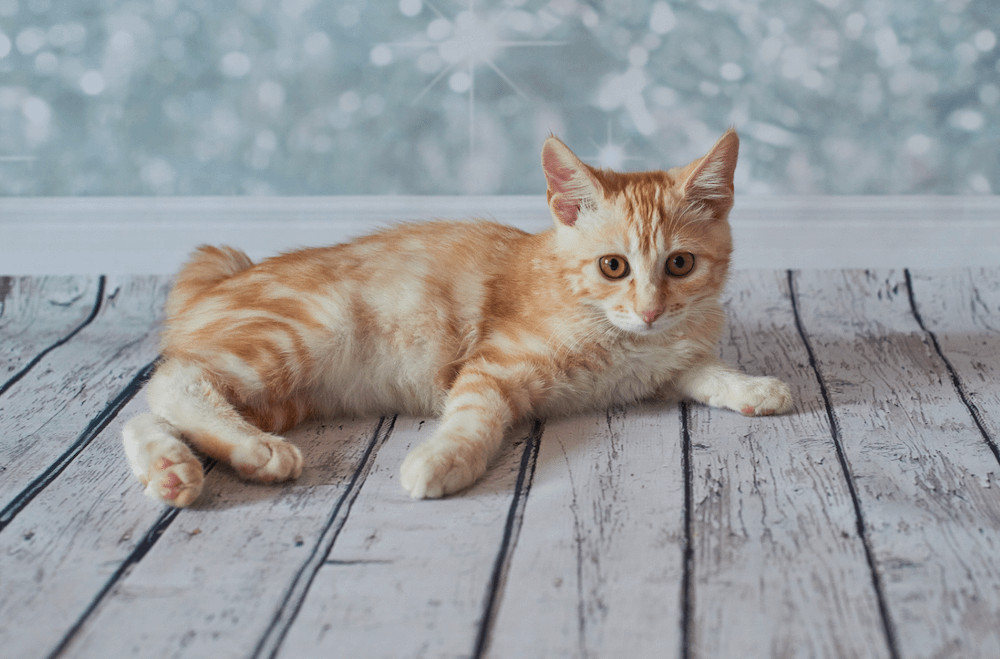 orange tabby American Bobtail kitten
orange tabby American Bobtail kitten
The American Bobtail, often likened to the “Golden Retriever of cats,” originated in the 1960s from naturally bobtailed feral cats. John and Brenda Sanders discovered a bobtailed cat at an Arizona motel and brought him home to Iowa. Breeding this cat with their Siamese cat resulted in bobtail kittens with gentle temperaments. Selective breeding further developed the American Bobtail’s distinctive “wild” appearance, short tail, and sturdy build.
American Bobtails are known for their adaptability and laid-back personalities. They enjoy play, leash walking, and even travel, but are not overly demanding in terms of activity. They appreciate a balance of playtime and relaxation.
2. Japanese Bobtail
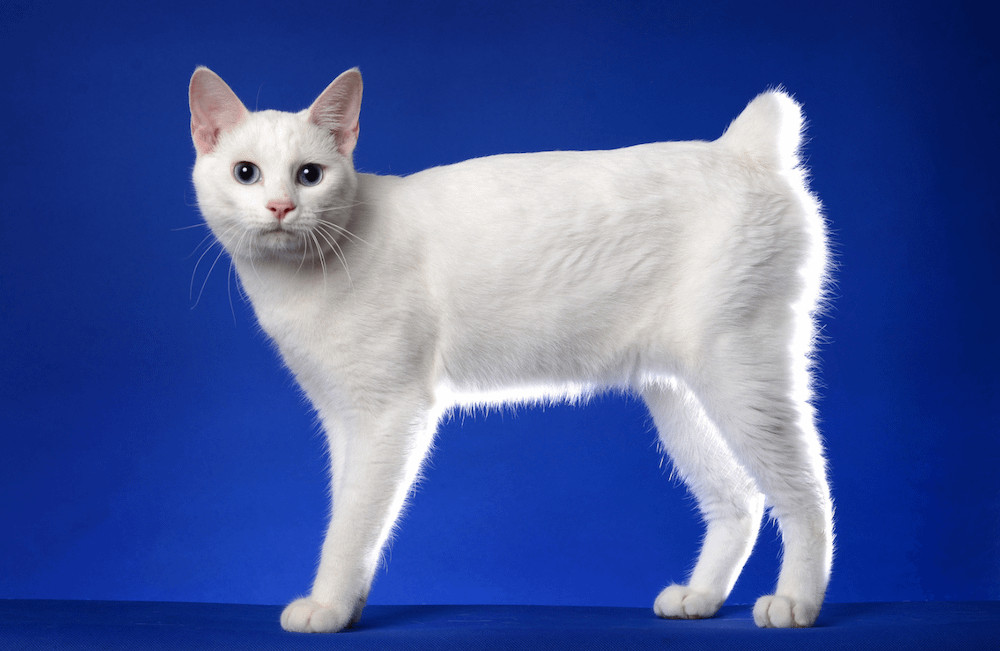 white Japanese Bobtail cat
white Japanese Bobtail cat
The Japanese Bobtail, with its distinctive “bunny tail,” boasts a history stretching back potentially over 1,000 years. Records of the breed appear as early as the 1600s, when they were introduced to the streets of Japan to control rat populations in silkworm farms. The first Japanese Bobtail arrived in the U.S. in 1968.
Breed standards dictate that the Japanese Bobtail’s tailbone should be no longer than three inches and clearly visible. Each tail is unique in its size, tufts, kinks, and curls.
Japanese Bobtails are known for their cheerful and social nature. They enjoy being around people, often following their owners and vocalizing with chirps for attention.
3. Highlander
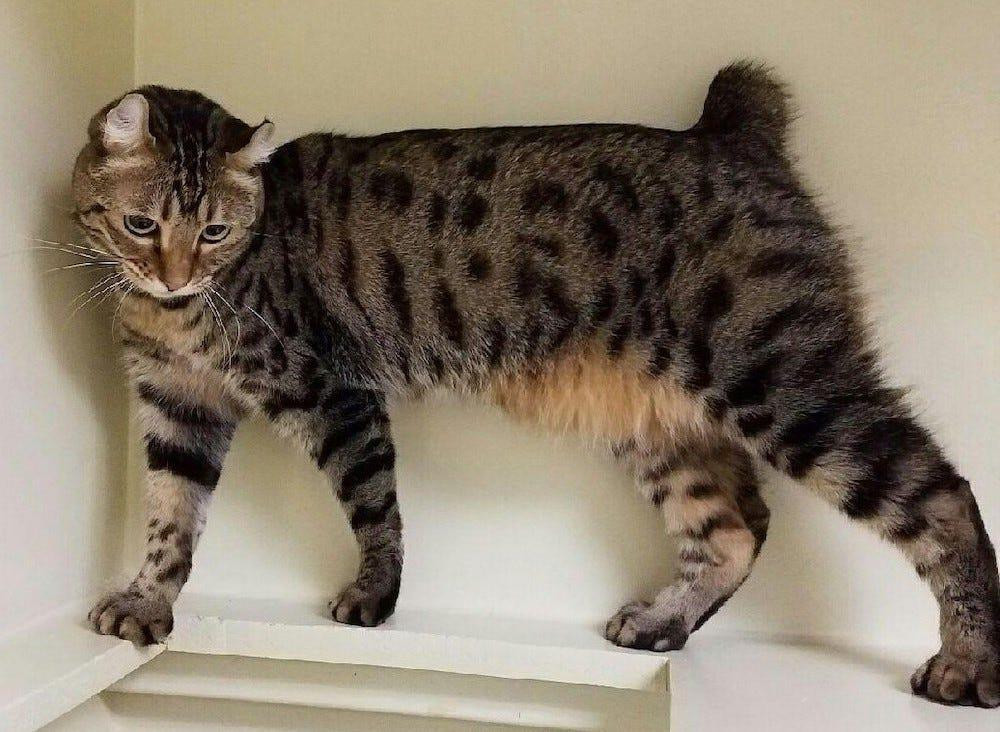 Highlander cat
Highlander cat
The Highlander cat breed’s bobbed tail, coupled with their often substantial coats, creates a visually striking feline. This breed emerged from a cross between the experimental Desert Lynx bobtail cats, contributing the short tail and exotic spots, and the Jungle Curl, responsible for their distinctive curled ears. While not yet recognized by major cat registries, the Highlander is recognized by the Rare and Exotic Feline Registry.
Despite their somewhat wild appearance, Highlander cats are known for their playful and outgoing personalities. They are people-oriented and enjoy socializing with both familiar faces and newcomers.
4. Pixie-bob
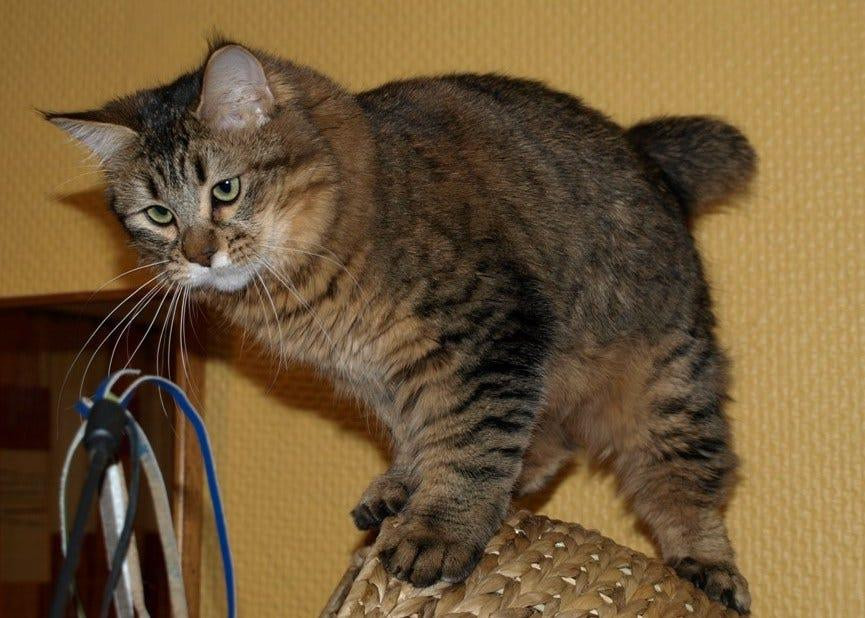 Pixie-bob cat
Pixie-bob cat
Among bobtail breeds, the Pixie-bob arguably bears the closest resemblance to a wild bobcat. Legends surrounding the breed suggest origins from wild North American bobcats, but like the American Bobtail, the Pixie-bob is a domestic cat with a naturally occurring tail mutation. Breeders in the 1980s developed the Pixie-bob to resemble the wild red bobcats of Washington state’s coastal mountains.
Pixie-bobs can grow to be large cats and are frequently polydactyl (possessing extra toes). They typically exhibit brown tabby coat patterns, sometimes with reddish tones, and can have short or long fur. Known for their dog-like personalities, Pixie-bobs can be trained to fetch and even walk on a leash.
5. Kurilian Bobtail
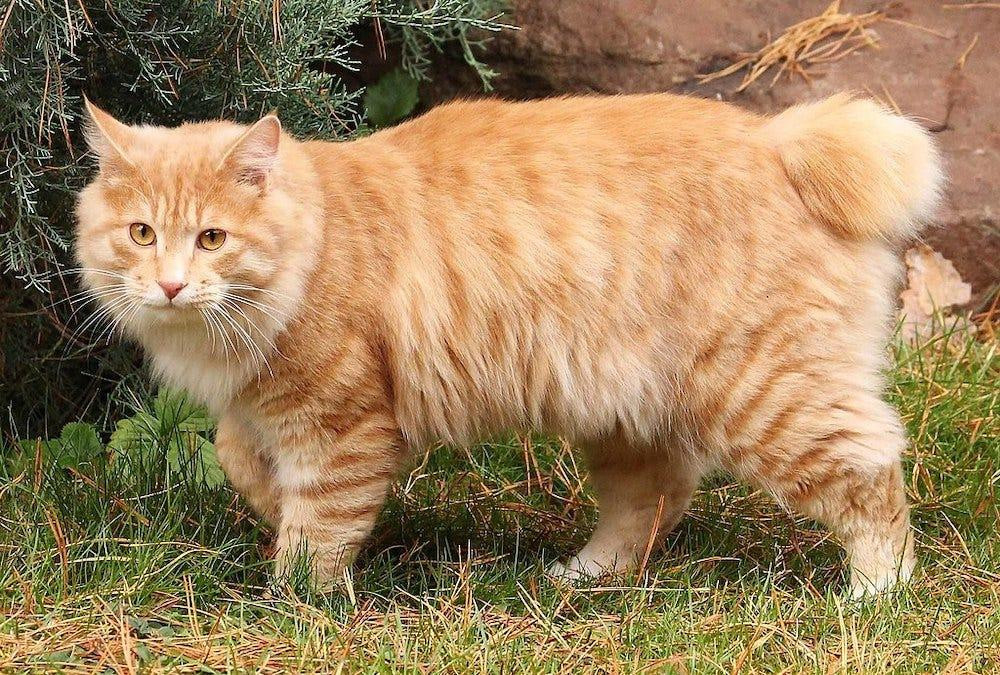 long-haired orange tabby Kurilian Bobtail cat
long-haired orange tabby Kurilian Bobtail cat
The Kurilian Bobtail, with its lynx-like appearance, is a natural breed originating from Russia’s Sakhalin island and Kuril archipelago. Short-tailed cats have been documented on these islands for at least 200 years, and were brought to central Russia in the mid-20th century. Their “pom” tails complement their sturdy bodies and lush, semi-long coats.
Kurilian Bobtails are renowned for their hunting prowess, but they are also affectionate and gentle companions. They readily transition from mousing to cuddling on their owner’s lap. Interestingly, they are also known to enjoy playing in water.
6. Mekong Bobtail
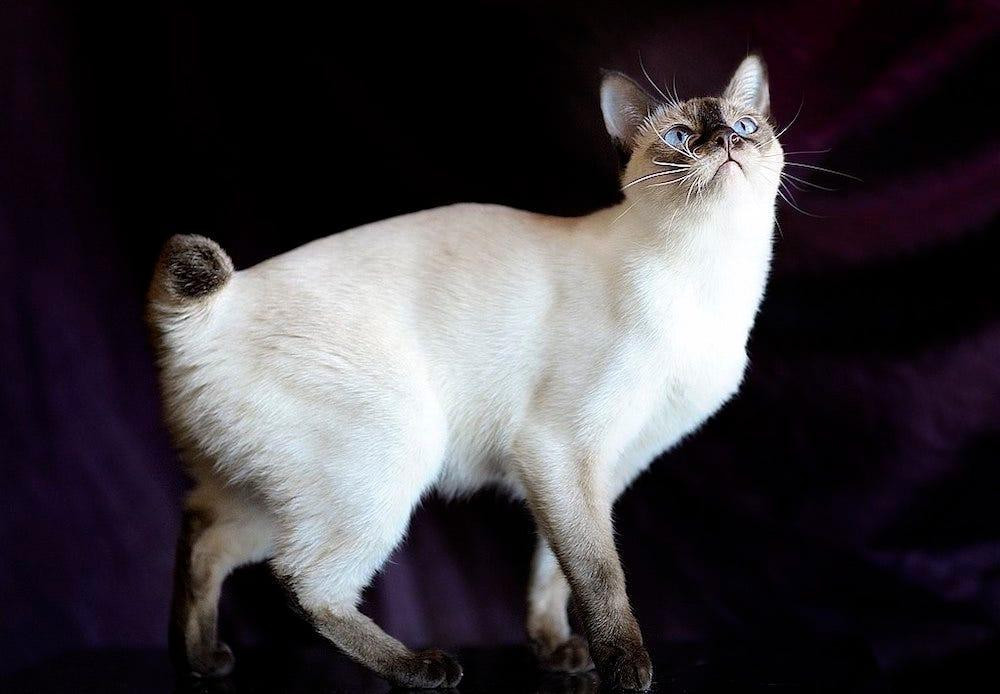 Mekong Bobtail cat
Mekong Bobtail cat
The Mekong Bobtail, characterized by a distinctively kinked tail, is naturally found across Southeast Asia. In the late 19th century, approximately 200 of these cats, considered “royal,” were gifted to Tsar Nicholas II of Russia by the King of Siam (modern Thailand). This gift played a role in the later development of the Toybob breed in Russia.
The Mekong Bobtail resembles a Siamese cat with a bobbed tail. This breed is known for its affectionate and playful nature, enjoying the company of children and even strangers. They are particularly devoted to their human families and prefer to spend as much time as possible close to them.
7. Toybob
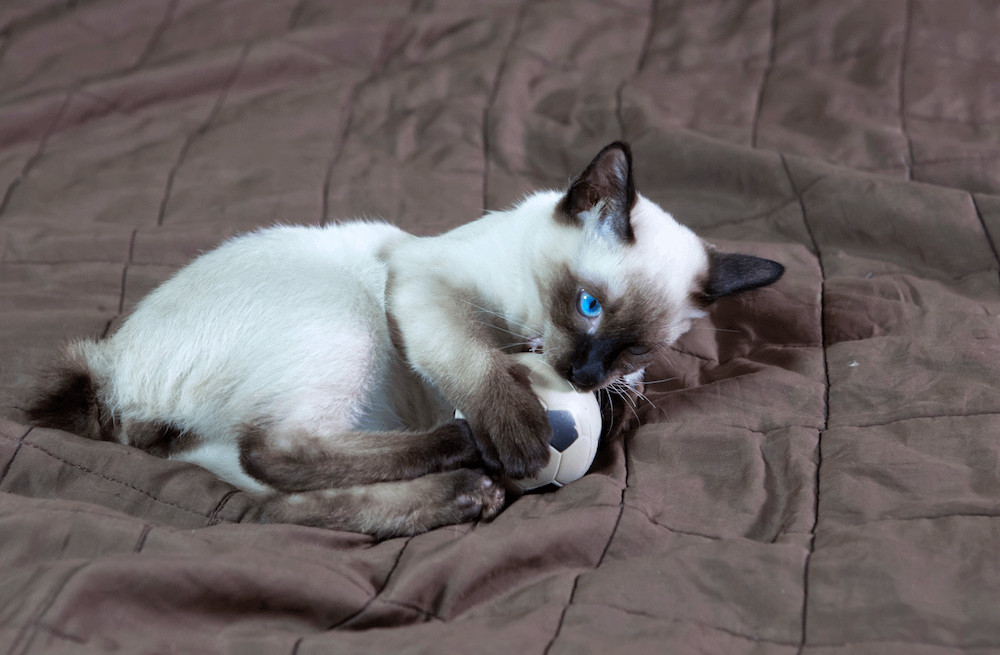 Toybob cat
Toybob cat
The Toybob breed is characterized by its diminutive size, maintaining a kitten-like stature throughout its life. The breed emerged when a Mekong Bobtail breeder bred a stray seal-point male with a kinked bobbed tail to a short-tailed seal-point female. The resulting kittens were exceptionally small, with Toybobs typically weighing between 3 and 7 pounds.
Toybobs are playful and cuddly companions who thrive on human interaction. While they may be initially shy with strangers, they warm up over time. These affectionate and devoted cats possess personalities that seem larger than their small frames.
Cats Without Tails: Manx and Cymric Breeds
While bobtail cats have shortened tails, some breeds are known for producing cats with no tails at all. The Manx (short-haired) and Cymric (long-haired) breeds are notable for this tailless trait. The Owyhee Bob, a less common breed, can also be tailless or have a very short tail.
Health Considerations for Tailless Cats
The absence of a tail in Manx and Cymric cats results from a genetic mutation that prevents the development of tail vertebrae. Unfortunately, this same gene can cause serious health problems, including developmental abnormalities and even death in kittens. “Manx Syndrome” is a collection of birth defects that can occur when two tailless cats are bred together. This syndrome can lead to spinal and spinal cord shortening, resulting in hind leg weakness, urinary and bowel control issues, and other debilitating problems.
Due to these significant health risks, responsible breeders prioritize ethical breeding practices, and adoption from shelters or rescues is strongly recommended for those interested in Manx or Cymric cats. Supporting responsible adoption helps to discourage breeding practices that can perpetuate these genetic health issues.
Manx
 brown tabby Manx cat
brown tabby Manx cat
The Manx cat originated on the Isle of Man, an isolated island where inbreeding contributed to the tailless trait becoming common.
Manx cats are known for their exceptional mousing skills, but they are also affectionate and mellow companions when not on the hunt. They are adaptable, intelligent, and highly people-oriented, preferring the company of their families above all else.
Cymric
The Cymric is essentially the long-haired version of the Manx, sharing its origins on the Isle of Man. Legend attributes the Cymric’s taillessness to a humorous tale of Noah’s Ark, suggesting its tail was caught in the door.
Like the Manx, Cymric cats are sweet and playful, but unfortunately, they also face the same potential for severe genetic health problems associated with the tailless gene.
Photo credits:
- Cover: © TRUE KURILIANS / CC-BY-SA-4.0
- Highlander: © DigitalDirt / CC-BY-SA-4.0
- Pixie-bob: © Donna Cox / CC-BY-SA-3.0
- Kurilian Bobtail: © TRUE KURILIANS / CC-BY-SA-4.0
- Mekong Bobtail: © Alex Opryatin / CC-BY-SA-3.0
[

